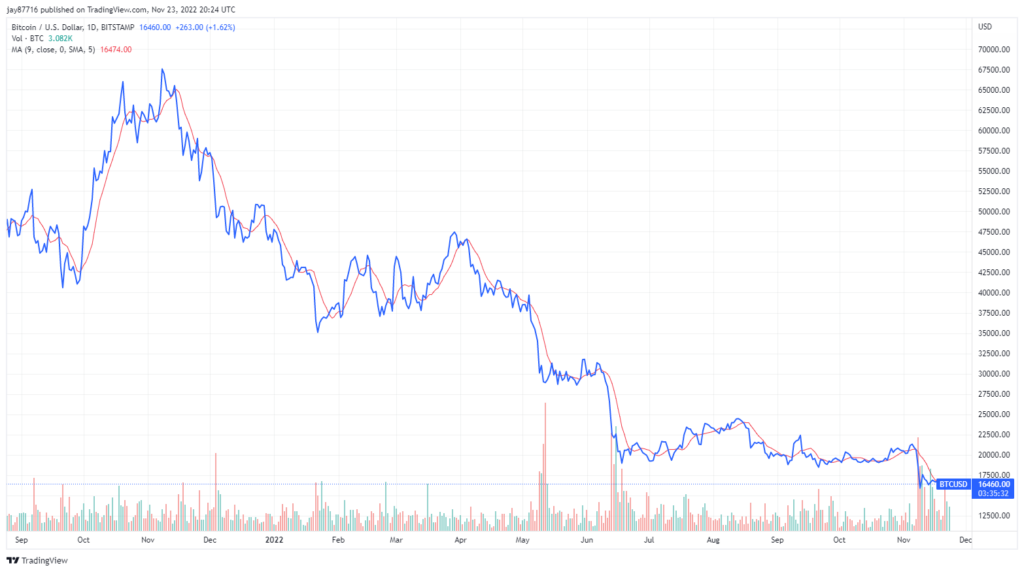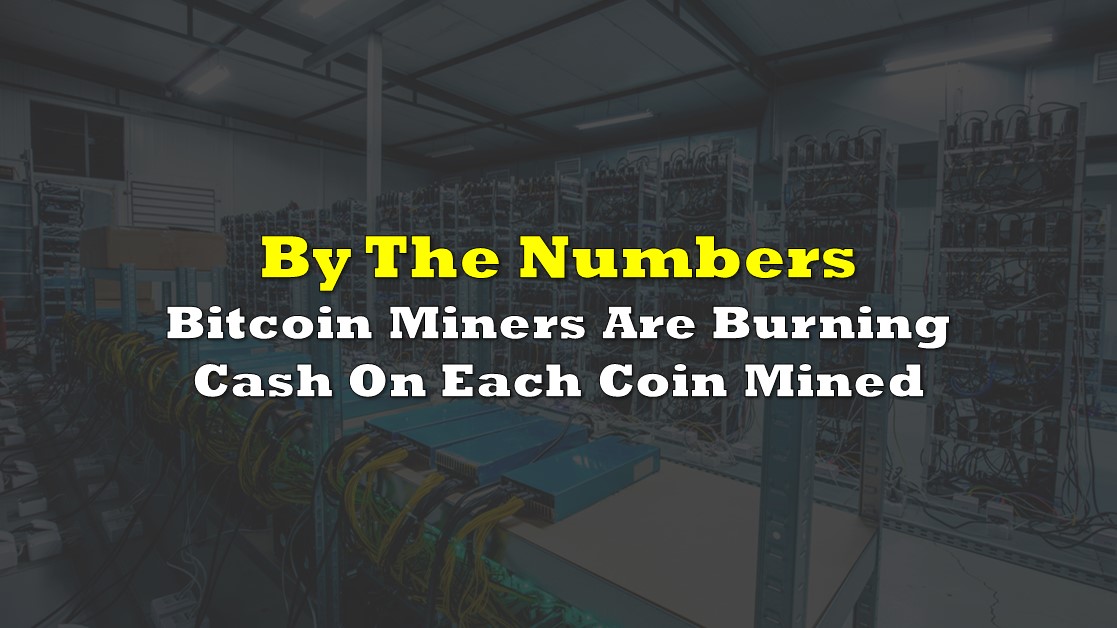The trouble with bitcoin, is that it doesn’t make economical sense to mine it.
With the falling price of the flagship digital currency, tough times are falling on public bitcoin miners. The most recent round of financials demonstrates this, along with certain events in the space that have further highlighted the struggle facing such operators.
Take for example Iris Energy (NASDAQ: IREN), an Australia-based bitcoin miner whom earlier this month provided an update to investors indicating it had defaulted on not one, but two limited-recourse loans related to financing certain of its mining operations. The loans, which amounted to $32 million and $71 million as of September 30, were secured by 1.6 EH/s and 2.0 EH/s of bitcoin mining capacity, respectively.
The default for these loans essentially amounted to the company failing to negotiate the restructuring of the debt in good faith, with the company electing to not make required principal payments on October 25 – despite reportedly having $53.0 million of cash on hand as of October 31. In it’s press release on the matter, Iris was rather straightforward, stating, “Certain equipment (i.e., Bitcoin miners) .. currently produce insufficient cash flow to service their respective debt financing obligations, and have a current market value well below the principal amount of the relevant loans.”
The equipment secured against the two loans were said to be generating $2.0 million in monthly gross profit, while the aggregate monthly principal and payment obligations amounted to $7.0 million.
Put simply, the economics no longer made sense.
The company currently maintains 2.4 EH/s of bitcoin mining capacity post-default.
The economics of bitcoin mining however are not limited to only Iris Energy. Other public entities in the space include Hut 8 Mining (TSX: HUT), Hive Blockchain (TSXV: HIVE), Bitfarms (TSX: BITF), Digihost Technologies (TSXV: DGHI), and Riot Blockchain (NASDAQ: RIOT), among others. Let’s look at how the economics shake out, using data for the three month period ended September 30, 2022.
Bitcoin miner cost of production for the period ended September 30, 2022
| Company | Bitcoin Mined | Cost of Goods Sold | COGS / Bitcoin | Depreciation | COGS + Depreciation / Bitcoin |
|---|---|---|---|---|---|
| Bitfarms | 1,515 | $16,466,000 | $10,869 | $20,720,000 | $24,545 |
| Digihost | 202.78 | $4,823,401 | $23,786 | $2,672,621 | $36,966 |
| Hut 8* | 982 | $13,468,770 | $13,715 | $17,990,427 | $32,036 |
| Hive Blockchain** | 1,380.2 | $13,656,022 | $9,894 | $24,322,657 | $27,517 |
| Riot Blockchain*** | 1,042 | $14,677,000 | $14,085 | $26,559,000 | $39,573 |
*Results converted from CAD to USD at 1:0.75
**For Q3, Hive posted a bitcoin equivalent figure, blending ETH mining with BTC mining.
***Excludes power curtailment credits, depreciation is blended with hosting segment
It should be noted that certain nuisances exist within the data provided above. In the case of Hive Blockchain, they previously mined a mix of bitcoin and ethereum until the latter changed to proof of stake from proof of work mining, resulting in an “equivalent” figure being provided for their mining results.
Riot Blockchain meanwhile earns power credits, which impact the cost of production depending on where it applies the credit. On a proportional basis related to its hosting activities, the firms COGS / Bitcoin figure reduces down to $8,227 per bitcoin. Depreciation meanwhile is not broken out between the firms mining and data center segments, artificially inflating the firms COGS+Depreciation / Bitcoin figure.

Based on a bitcoin price of $16,458 at the time of writing, once depreciation is factored in – an absolute must in a space that requires the latest in computing capacity to be competitive – absolutely no one is generating positive gross margins. This, of course, is before any corporate expenses are factored in to the operation. Excluding depreciation, some of the operations can be considered to be “profitable” on a gross basis, which effectively enables these operators to attempt to pay their outstanding debts, if they haven’t subscribed to a “HODL” strategy that prevents them from selling the bitcoin once produced.
An example of such a strategy would be Hut 8 Mining, whom sells none of the bitcoin it produces. For the nine months ended September 30, the company has recognized a loss of C$216.2 million on the 8,388 bitcoin it holds, based on a bitcoin price of $19,432. With current pricing, that figure is set to increase by C$33.3 million, bringing the total to C$249.5 million – a significant sum given that the company has recognized revenues of just C$128.8 million during the same time frame.
For bitcoin miners, it comes down to one thing – the trend is not your friend.
Information for this briefing was found via Sedar, Edgar, Tradingview, and the sources mentioned. The author has no securities or affiliations related to this organization. Not a recommendation to buy or sell. Always do additional research and consult a professional before purchasing a security. The author holds no licenses.









